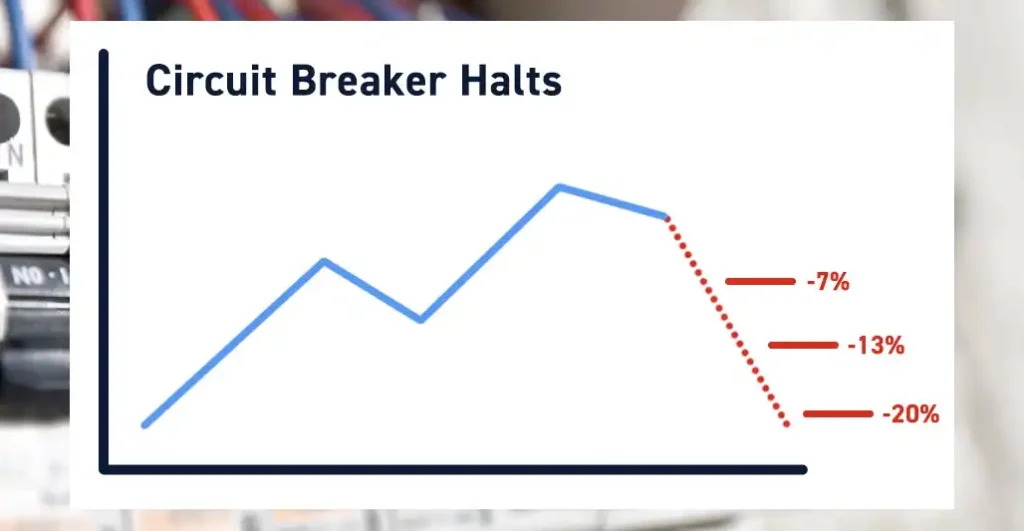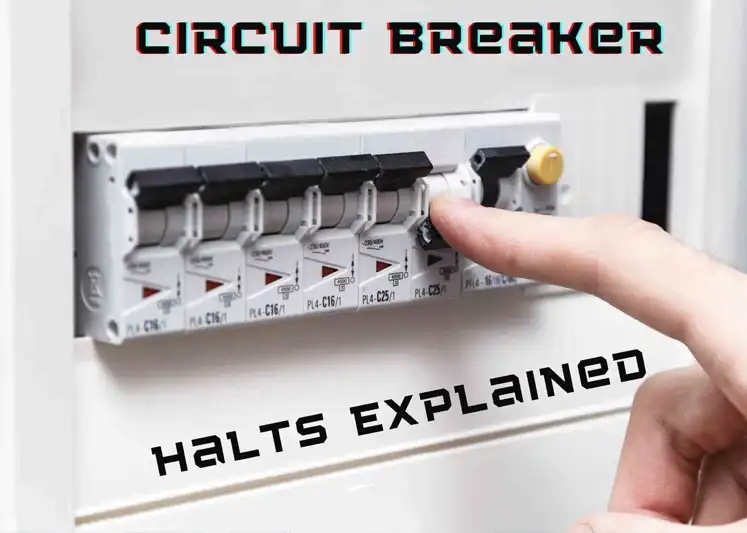Circuit breakers are indispensable components of modern electrical systems, providing crucial protection against overloads, short circuits, and other faults that could lead to electrical hazards. One of the key functions of a circuit breaker is to halt the flow of electricity when it detects abnormal conditions in the circuit it safeguards.
In this blog post, we will delve into the concept of circuit breaker halts, exploring what they are, how they work, and why they are essential for ensuring electrical safety in homes, businesses, and industrial facilities.
What Is Circuit Break Halt?

A circuit breaker halt, also known simply as a “trip,” refers to the action taken by a circuit breaker when it detects an electrical fault or abnormal condition in the circuit it protects.
When a circuit breaker senses an overcurrent, short circuit, or other potentially hazardous situation, it interrupts the flow of electricity by opening its contacts. This interruption, or trip, effectively disconnects the circuit from the power source, preventing further flow of current and helping to safeguard the electrical system and connected devices from damage or fire.
The circuit breaker halt occurs rapidly, typically within milliseconds or a few cycles of the electrical frequency. This swift response is crucial for minimizing potential harm and ensuring the safety of the electrical system. Once the fault condition is resolved or the circuit breaker is manually reset, the contacts are closed again, allowing electricity to flow normally through the circuit.
What Does Halted on Circuit Breaker Mean

When a circuit breaker is said to be “halted,” it means that the breaker has tripped or interrupted the flow of electricity in response to a fault or abnormal condition detected in the electrical circuit it protects. This interruption is a protective measure taken by the circuit breaker to prevent damage to the electrical system and connected devices, as well as to mitigate the risk of electrical hazards such as fires or electric shocks.
When a circuit breaker halts, it effectively opens its contacts to disconnect the circuit from the power source, thereby stopping the flow of electricity. This action occurs rapidly upon detection of the fault, typically within milliseconds or a few cycles of the electrical frequency.
The term “halted” is commonly used to describe the state of a circuit breaker after it has tripped and interrupted the electrical circuit. In this state, the circuit breaker remains in the tripped position until the fault condition is cleared or resolved, and the breaker is manually reset or automatically resets after a specified delay.
Circuit Breaker Halts in Futures Markets
In futures trading, circuit breaker protocols are put in place to regulate extreme price fluctuations and uphold market stability. These thresholds are determined based on factors like the contract’s value and current market dynamics. Let’s delve into how circuit breaker halts operate in futures markets, taking the Chicago Mercantile Exchange (CME Group) as an illustration:
- Initial Price Limit: Initially, a price ceiling and floor are established, typically set at about 5% above or below the contract’s previous day’s settlement price. When this limit is reached, a two-minute monitoring period begins. If trading remains within this limit during the monitoring period, regular trading continues. However, if the limit is breached, a two-minute halt is initiated.
- Expanded Price Limit: Following the initial halt, an expanded price range is introduced, usually extending by an additional 5% beyond the initial limits. Trading can then resume within this broader range, providing some flexibility while still ensuring risk management.
- Price Limit for the Remainder of the Session: If the market surpasses the expanded limit as well, another halt is enforced. After this halt, a new price range is set for the remainder of the trading session. This range is often established at 10% or 13%, depending on the specific contract and prevailing market conditions.
It’s essential to recognize that these percentage thresholds are not static and can be adjusted by the exchange to reflect the prevailing market environment. The aim of these circuit breaker measures is to curb excessive volatility and offer traders a structured framework to manage risk during periods of heightened uncertainty or rapid price swings. Through the implementation of circuit breaker halts, futures markets endeavor to uphold orderly trading and preserve market integrity.
How Long Are Circuit Breaker Halts
The duration of a circuit breaker halt, also known as a trip, can vary depending on several factors, including the type of fault detected and the response time of the circuit breaker. In general, circuit breaker halts occur rapidly, typically within milliseconds or a few cycles of the electrical frequency (usually 50 or 60 Hz).
When a circuit breaker detects an overcurrent or short circuit, it initiates a trip sequence to interrupt the flow of electricity and protect the electrical system from damage or hazards. The breaker’s trip mechanism operates swiftly to open its contacts, effectively disconnecting the circuit from the power source.
The duration of the circuit breaker halt is designed to be as brief as possible to minimize disruptions to the electrical system. Once the fault condition is cleared or resolved, the circuit breaker can be manually reset or may attempt to automatically reset after a brief delay, depending on its design.
Conclusion
In conclusion, a circuit breaker halt refers to the protective action taken by a circuit breaker when it detects an electrical fault or abnormal condition in the circuit it safeguards. This interruption, often called a trip, occurs swiftly to prevent damage to the electrical system and connected devices, as well as to mitigate the risk of electrical hazards such as fires or electric shocks.
When a circuit breaker halts, it effectively opens its contacts to disconnect the circuit from the power source, stopping the flow of electricity. This rapid response is essential for maintaining electrical safety and preventing potential damage or hazards.
Understanding circuit breaker halts is crucial for ensuring the proper operation and protection of electrical systems in various applications, from residential to industrial settings.